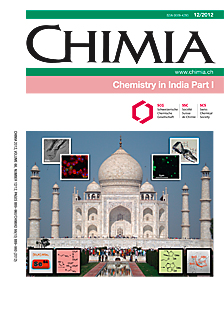Strategies for the Synthesis of Graphene, Graphene Nanoribbons, Nanoscrolls and Related Materials
DOI:
https://doi.org/10.2533/chimia.2012.941Keywords:
GrapheneAbstract
Single-layer graphene (SLG), the 3.4 Å thick two-dimensional sheet of sp2 carbon atoms, was first prepared in 2004 by mechanical exfoliation of graphite crystals using the scotch tape technique. Since then, SLG has been prepared by other physical methods such as laser irradiation or ultrasonication of graphite in liquid media. Chemical methods of synthesis of SLG are more commonly used; the most popular involves preparation of single-layer graphene oxide followed by reduction with a stable reagent, often assisted by microwave heating. This method yields single-layer reduced graphene oxide. Other methods for preparing SLG include chemical vapour deposition over surfaces of transition metals such as Ni and Cu. Large-area SLG has also been prepared by epitaxial growth over SiC. Few-layer graphene (FLG) is prepared by several methods; arc discharge of graphite in hydrogen atmosphere being the most convenient. Several other methods for preparing FLG include exfoliation of graphite oxide by rapid heating, ultrasonication or laser irradiation of graphite in liquid media, reduction of few-layer graphene oxide, alkali metal intercalation followed by exfoliation. Graphene nanoribbons, which are rectangular strips of graphene, are best prepared by the unzipping of carbon nanotubes by chemical oxidation or laser irradiation. Many graphene analogues of inorganic materials such as MoS2, MoSe2 and BN have been prepared by mechanical exfoliation, ultrasonication and by chemical methods involving high-temperature or hydrothermal reactions and intercalation of alkali metals followed by exfoliation. Scrolls of graphene are prepared by potassium intercalation in graphite or by microwave irradiation of graphite immersed in liquid nitrogen.Downloads
Published
2012-12-19
Issue
Section
Scientific Articles
License
Copyright (c) 2012 Swiss Chemical Society

This work is licensed under a Creative Commons Attribution-NonCommercial 4.0 International License.
How to Cite
[1]
U. Maitra, H. S. S. R. Matte, P. Kumar, C. N. R. Rao, Chimia 2012, 66, 941, DOI: 10.2533/chimia.2012.941.







